 W
WPropaganda in Nazi Germany was the practice of state directed communication to promote German nationalism, the goals of the Nazi Party of Germany, and the party itself. The propaganda used by the German Nazi Party in the years leading up to and during Adolf Hitler's leadership of Germany (1933–1945) was a crucial instrument for acquiring and maintaining power, and for the implementation of Nazi policies.
 W
WOn February 20, 1939, a Nazi rally took place at Madison Square Garden, organized by the German American Bund. More than 20,000 people attended, and Fritz Julius Kuhn was a featured speaker. The Bund billed the event, which took place two days before George Washington's Birthday, as a pro-"Americanism" rally; the stage at the event featured a huge Washington portrait with swastikas on each side.
 W
WAllach porcelain a.k.a. Porzellan Manufaktur Allach was produced in Germany between 1935 and 1945. After its first year of operation, the enterprise was run by the SS with forced labor provided by the Dachau concentration camp. The emphasis was on decorative ceramics —objets d'art for the Nazi regime. The company logo included stylized SS runes. Sometimes in place of the company name, the pottery markings mentioned the SS: "DES - WIRTSCHAFTS - VERWALTUNGSHAUPTAMTES".
 W
WThe Nazi regime in Germany actively promoted and censored forms of art between 1933 and 1945. Upon becoming dictator in 1933, Adolf Hitler gave his personal artistic preference the force of law to a degree rarely known before. In the case of Germany, the model was to be classical Greek and Roman art, seen by Hitler as an art whose exterior form embodied an inner racial ideal. It was, furthermore, to be comprehensible to the average man. This art was to be both heroic and romantic. The Nazis viewed the culture of the Weimar period with disgust. Their response stemmed partly from conservative aesthetics and partly from their determination to use culture as propaganda.
 W
WThe Aryan race is a debunked historical race concept which emerged in the late 19th century to describe people of Indo-European heritage as a racial grouping. The theory has been widely rejected and disproved since no historical or archaeological evidence exists.
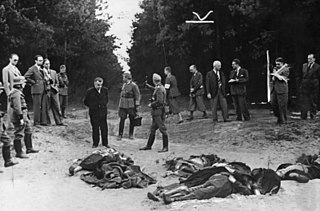 W
WBloody Sunday was a sequence of violent events that took place in Bydgoszcz, a Polish city with a sizable German minority, between 3 and 4 September 1939, during the German invasion of Poland.
 W
WBlutzeuge was a term used in Nazi Germany for members of the National Socialist German Workers' Party (NSDAP) and associated organizations considered to be martyrs. Blutzeuge was used in Nazi propaganda in the 1930s and 1940s depicting a hero cult of "fallen" Nazis who had been murdered by opponents in the political violence in Germany during the Weimar Republic and after the seizure of control in January 1933. An early Nazi usage of the term was Adolf Hitler's dedication at the start of Mein Kampf, which he dedicated to the sixteen NSDAP members killed in the 1923 Beer Hall Putsch.
 W
WThe Concentration Camps Inspectorate (CCI) or in German, IKL was the central SS administrative and managerial authority for the concentration camps of the Third Reich. Created by Theodor Eicke, it was originally known as the "General Inspection of the Enhanced SS-Totenkopfstandarten", after Eicke's position in the SS. It was later integrated into the SS Main Economic and Administrative Office as "Amt D".
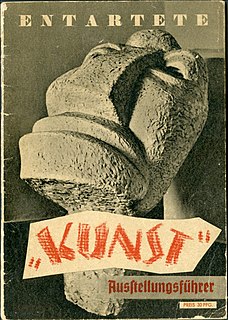 W
WThe Degenerate Art Exhibition was an art exhibition organized by Adolf Ziegler and the Nazi Party in Munich from 19 July to 30 November 1937. The exhibition presented 650 works of art, confiscated from German museums, and was staged in counterpoint to the concurrent Great German Art Exhibition. The day before the exhibition started, Hitler delivered a speech declaring "merciless war" on cultural disintegration, attacking "chatterboxes, dilettantes and art swindlers". Degenerate art was defined as works that "insult German feeling, or destroy or confuse natural form or simply reveal an absence of adequate manual and artistic skill". One million people attended the exhibition in its first six weeks. A U.S. critic commented "there are probably plenty of people—art lovers—in Boston, who will side with Hitler in this particular purge".
 W
WDer Hitlerjunge Quex is a 1932 Nazi propaganda novel by Karl Aloys Schenzinger based on the life of Herbert “Quex” Norkus. The 1933 film Hitlerjunge Quex: Ein Film vom Opfergeist der deutschen Jugend was based on it and was described by Joseph Goebbels as the "first large-scale" transmission of Nazi ideology using the medium of cinema. Both the book and the film, like S.A.-Mann Brand and Hans Westmar, both released the same year, fictionalised and glorified death in the service of the Nazi Party and Adolf Hitler.
 W
WThe Deutscher Fichte-Bund (German Fichte Federation) was a German propaganda agency based in Hamburg. It was founded on 29 January 1914 as the "Reichsbund für Deutschtumsarbeit" (Reich Federation for German Studies) by Heinrich Kessemeier and named after the philosopher Johann Gottlieb Fichte, a founder of the German Idealist movement. Later it was under the directorship of Heinrich's son Theodore Kessemeier.
 W
WKarl Friedrich Alfred Heinrich Ferdinand Maria Graf Eckbrecht von Dürckheim-Montmartin was a German diplomat, psychotherapist and Zen master. A veteran of World War I, he was introduced to Zen Buddhism early in life. After obtaining a doctorate in psychology, he became an avid supporter of the Nazi Party. Following World War II he was imprisoned in Japan which transformed him spiritually. Upon returning to Germany he became a leading proponent of the Western esoteric spiritual tradition, synthesizing teachings from Christian Mysticism, Depth Psychology and Zen Buddhism.
 W
WThe Emergency Fighter Program was the program that resulted from a decision taken on July 3, 1944 by the Luftwaffe regarding the German aircraft manufacturing companies during the last year of the Third Reich.
 W
WThe Eternal Jew was the title of an exhibition of antisemitism displayed at the Library of the German Museum in Munich from 8 November 1937 to 31 January 1938. The actual displays, with photographs and caricatures, focused on antisemitic canards in presenting the Jewish attempts at Bolshevising Nazi Germany. It was best exemplified in the exhibition poster presenting an 'eastern' Jew wearing a kaftan and holding gold coins in one hand and a whip in the other. The exhibition attracted 412,300 visitors, over 5,000 per day.
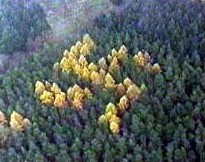 W
WThe forest swastika was a patch of larch trees covering 0.36 ha area of pine forest near Zernikow, Uckermark district, Brandenburg, in northeastern Germany, arranged with their light colors to look like a swastika.
 W
WWolfgang Fürstner was a German Wehrmacht captain who was appointed as commander and later vice-commander of Berlin's Olympic village during the 1936 Summer Olympics.
 W
WDer Giftpilz is a children's book published by Julius Streicher in Nazi Germany in 1938. The title is German for "the poisonous mushroom/toadstool". The book was intended as antisemitic propaganda. The text is by Ernst Hiemer, with illustrations by Philipp Rupprecht ; the title alludes to how, just as it is difficult to tell a poisonous mushroom from an edible mushroom, it is difficult to tell a Jew apart from a Gentile. The book attempts to "warn" German children about the dangers allegedly posed by Jews to them personally, and to German society in general.
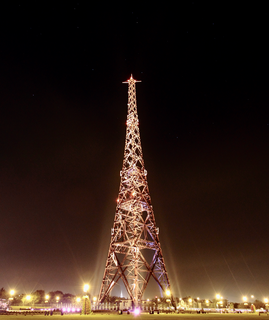 W
WThe Gleiwitz incident was a false flag attack on the German radio station Sender Gleiwitz, staged by Nazi Germany on the night of 31 August 1939. Along with some two dozen similar incidents, the attack was manufactured by Germany as a casus belli to justify the invasion of Poland, which began the next morning. The attackers posed as Polish nationals.
 W
WThe Goebbels Diaries are a collection of writings by Joseph Goebbels, a leading member of the National Socialist German Workers Party (NSDAP) and the Reich Minister of Public Enlightenment and Propaganda in Adolf Hitler's government from 1933 to 1945. The diaries, which have only recently been published in full in German and are available only in part in English, are a major source for the inner history of the Nazi Party and of its twelve years in power in Germany. The British historian Ian Kershaw wrote in the preface to his biography of Hitler: "For all the caution which must naturally be attached to Goebbels's regularly reported remarks by Hitler ... the immediacy as well as the frequency of the comments makes them a vitally important source of insight into Hitler's thinking and action."
 W
WHans Hinkel was a German journalist and ministerial official in Nazi Germany. He studied at the University of Bonn, where he was a member of the academic fencing fraternity Sugambria. Hinkel had served in the Freikorps and joined the NSDAP in 1921. From 1930 to 1932 he was the editor of the Völkischer Beobachter in Berlin. After the Nazis seized power in 1933, he became Reich Organization Leader of the Militant League for German Culture and manager of the Reich Culture Chamber (Reichskulturkammer).
 W
WDuring a speech at the Reichstag on 30 January 1939, Adolf Hitler threatened "the annihilation of the Jewish race in Europe" in the event of war:If international finance Jewry inside and outside Europe should succeed in plunging the nations once more into a world war, the result will be not the Bolshevization of the earth and thereby the victory of Jewry, but the annihilation of the Jewish race in Europe.
 W
WThe idea of a Jewish war against Nazi Germany is an antisemitic conspiracy theory promoted in Nazi propaganda which asserts that Jews, acting as a single historical actor, started World War II and sought the destruction of Germany. Alleging that war was declared in 1939 by Chaim Weizmann, president of the World Zionist Organization, Nazis used this false notion to justify the persecution of Jews under German control on the grounds that the Holocaust was justified self-defense. Since the end of World War II, the theory has been popular among Holocaust deniers.
 W
WLe Juif et la France was an anti-Semitic propaganda exhibition that took place in Paris from 5 September 1941 to 15 January 1942 during the German occupation of France in the Second World War. A film version of the exhibition came out in French cinemas in October 1941.
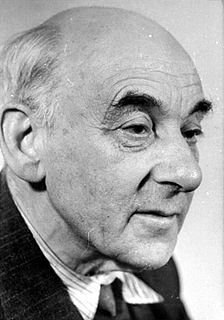 W
WLTI – Lingua Tertii Imperii: Notizbuch eines Philologen (1947) is a book by Victor Klemperer, Professor of Literature at the Dresden University of Technology. The title, half in Latin and half in German, translates to "The Language of the Third Reich: A Philologist's Notebook"; the book is published in English translation as The Language of the Third Reich.
 W
WNMS Marsuinul was a submarine of the Romanian Navy, one of the few warships built in Romania during the Second World War. She was the largest Romanian-built submarine and the most powerful and modern Axis submarine in the Black Sea.
 W
WDuring the final weeks of Nazi Germany and the war in Europe, many civilians, government officials and military personnel throughout Germany committed suicide. In addition to high-ranking Nazi officials like Adolf Hitler, Joseph Goebbels, Heinrich Himmler, Philipp Bouhler and Martin Bormann, many others chose Selbstmord rather than accept the defeat of Germany. Motivating factors included fear of reprisals and atrocities by the Allies and especially the Red Army, Nazi propaganda that glorified suicide as preferable to defeat, and despondence after the suicide of Adolf Hitler. For example, in May 1945, up to 1,000 people killed themselves before and after the entry of Red Army into the German town of Demmin which resulted in a wave of rapes, pillage, and executions committed by Red Army soldiers. In Berlin alone more than 7,000 suicides were reported in 1945.
 W
WMein Kampf is a 1925 autobiographical manifesto by Nazi Party leader Adolf Hitler. The work describes the process by which Hitler became antisemitic and outlines his political ideology and future plans for Germany. Volume 1 of Mein Kampf was published in 1925 and Volume 2 in 1926. The book was edited first by Emil Maurice, then by Hitler's deputy Rudolf Hess.
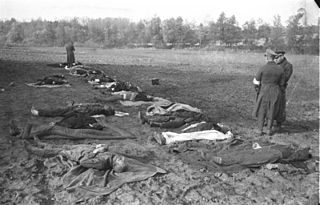 W
WThe Nemmersdorf massacre was a civilian massacre perpetrated by Red Army soldiers in the late stages of World War II. Nemmersdorf was one of the first prewar ethnic German villages to fall to the advancing Red Army during the war. On 21 October 1944, Soviet soldiers killed many German civilians as well as French and Belgian POWs.
 W
WThe Night of the Amazons was the name of a Nazi propaganda event that was held annually in Munich in the Nymphenburg Palace Park in the 1930s. The events were held on 27 July 1936, 31 July 1937, 30 July 1938 and 29 July 1939, and were the evening highlight of the International Horse Racing Week Munich-Riem. Members of the SS-Cavalry, variety show girls, and international stars performed at the open-air revue with up to 2,500 participants.
 W
WThe Nuremberg Rally was a celebratory event by the Nazi Party in Germany, first held in 1923. They were large Nazi propaganda events, especially after Adolf Hitler's rise to power in 1933, when they became annual occurrences at the Nazi party rally grounds in Nuremberg until 1938. Many films were made to commemorate them, including Leni Riefenstahl's Triumph of the Will and The Victory of Faith.
 W
WOPROP! was a German airborne propaganda leaflet dropped over several Danish cities at the German invasion of Denmark on 9 April 1940. The leaflets were signed by the head of Operation Weserübung Süd, General Leonhard Kaupisch. The text, written in broken but understandable Danish mixed with Norwegian, justified the German invasion as fraternally protecting Danish and Norwegian neutrality against British aggression, denounced Winston Churchill as a warmonger, and exhorted the Danish populace not to resist the German presence while an arrangement with the Danish government was being negotiated.
 W
WHans Schweitzer, known as Mjölnir, was an artist who produced many posters for the Nazi Party (NSDAP) under Adolf Hitler. In Teutonic mythology, Mjölnir is the name of Thor's hammer.
 W
WThe Soviet Paradise was the name of an exhibition and a propaganda film, which was organized by the Reichspropagandaleitung of the Nazi Party and was displayed in the larger cities of the Reich and occupied countries: Vienna, Prague, Berlin and others. Its goal was to show "poverty, misery, depravity and need" of the nations in the Soviet Union under Jewish Bolshevist rule and thus to justify the war against the Soviet Union. The accompanying guide for the exhibition noted, "The present Soviet state is nothing other than the realization of that Jewish invention".
 W
WHessy Levinsons Taft, a German Jew, was featured as an infant in Nazi propaganda after her photo won a contest to find "the most beautiful Aryan baby" in 1935. Taft's image was subsequently distributed widely by the Nazi party in a variety of materials, such as magazines and postcards, to promote Aryanism.
 W
WThe propaganda of the Nazi regime that governed Germany from 1933 to 1945 promoted Nazi ideology by demonizing the enemies of the Nazi Party, notably Jews and communists, but also capitalists and intellectuals. It promoted the values asserted by the Nazis, including heroic death, Führerprinzip, Volksgemeinschaft, Blut und Boden and pride in the Germanic Herrenvolk. Propaganda was also used to maintain the cult of personality around Nazi leader Adolf Hitler, and to promote campaigns for eugenics and the annexation of German-speaking areas. After the outbreak of World War II, Nazi propaganda vilified Germany's enemies, notably the United Kingdom, the Soviet Union and the United States, and in 1943 exhorted the population to total war.
 W
WThe position of Nazi propaganda towards the United Kingdom changed over time in keeping with Anglo-German relations. Prior to 1938, as the Nazi regime attempted to court the British into an alliance, Nazi propaganda praised the "Aryan" character of the British people and the British Empire. However, as Anglo-German relations deteriorated and the Second World War broke out, Nazi propaganda vilified the British as oppressive, German-hating plutocrats. During the war, it accused "perfidious Albion" of war crimes, and sought to drive a wedge between Britain and France.
 W
WThe Volksempfänger was a range of radio receivers developed by engineer Otto Griessing at the request of Joseph Goebbels, the Reich Minister of Propaganda of the Nazi regime.
 W
WThe Volksflugzeug was a grand Third Reich scheme for the mass-production of a small and simple airplane in the 1930s. It was one of the attempts of the Nazi regime to use consumer technologies as a propaganda tool. Unlike the Volkswagen car, the showpiece of the Nazi's attempt to appear to work for the good of the average German, as well as the less-known Volksempfänger radio, the Volkskühlschrank refrigerator and the Volksgasmaske gas mask, the Volksflugzeug project was contemplated but never fully realized.
 W
WWehrmachtbericht was the daily Wehrmacht High Command mass-media communiqué and a key component of Nazi propaganda during World War II. Produced by the Propaganda Department of the OKW, it covered Germany's military situation and was broadcast daily on the Reich Broadcasting Corporation of Nazi Germany. All broadcasts were authorized by the Reich Ministry of Propaganda under Joseph Goebbels. Despite the latter's attempts to temper excessive optimism, they often exaggerated the success of the German army, leading historian Aristotle Kallis to describe their tone as "triumphalist".
 W
WWunderwaffe is German for "wonder weapon" and was a term assigned during World War II by Nazi Germany's propaganda ministry to some revolutionary "superweapons". Most of these weapons however remained prototypes, which either never reached the combat theater, or if they did, were too late or in too insignificant numbers to have a military effect.
 W
WAdolf Ziegler was a German painter and politician. He was tasked by the Nazi Party to oversee the purging of what the Party described as "degenerate art", by most of the German modern artists. He was Hitler's favourite painter.
 W
WThe Zweites Buch, published in English as Hitler's Secret Book and later as Hitler's Second Book, is an unedited transcript of Adolf Hitler's thoughts on foreign policy written in 1928; it was written after Mein Kampf and was not published in his lifetime.
 W
W